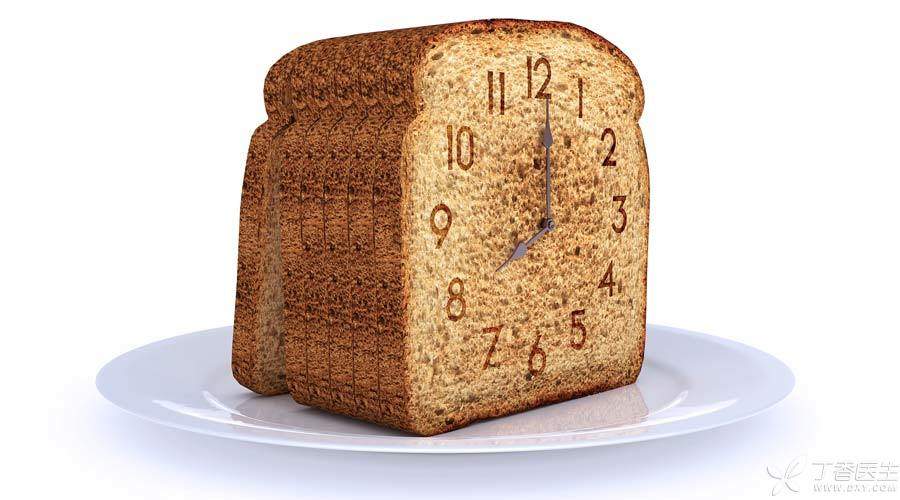
Carbohydrates are very important to sports and fitness enthusiasts.
On the one hand, carbohydrate synthesizes enough muscle glycogen, which provides energy for muscles during exercise and ensures the completion of different exercise methods. On the other hand, carbohydrate is the energy supply source of brain and central nervous system, which affects the heartbeat, fatigue, movement skills and attention during exercise, thus affecting the exercise effect.
However, perhaps because of some biased mainstream reports, in some people’s minds, carbohydrate is synonymous with getting fat, and they turn pale at the mention of [carbohydrate] and avoid it. Many weight loss diets circulated in the community are also designed around [reducing carbohydrate].
However, research has proved that low-carbon diet will bring many adverse health effects, and it is not easy to stick to it. Carbohydrate cycling came into being.
What is a high and low carbon circular diet.
The idea of high and low carbon circulating diet is to make use of the instability of carbohydrate supply in diet, play tricks with the metabolic system of the body, and alternate the intake of high-carbon water and low-carbon water so as to achieve the effect of weight loss.
According to the exercise arrangement and intensity, the intake of various nutrients and total calories is specifically adjusted to ensure the daily mental state and the storage of muscle glycogen, which will not affect the fitness intensity or duration.
Compared with a pure low-carbon diet, the high and low carbon cycle is also easy to adhere to for a long time. As long as you grasp the intake of total calories, it is indeed possible to achieve the effect of weight loss.
However, there is no effective scientific research on the weight loss effect or possible side effects of this diet at present. It can only be carried out as a personal preference among many diet patterns under the guidance of experienced nutritionists and according to specific conditions.

How to Design High and Low Carbon Circulating Diet
Before starting, we should make sufficient preparations. We should comprehensively consider factors such as age, sex, height and weight, exercise amount and goals (weight loss, weight maintenance, or muscle gain). We should fully understand our exercise habits and dietary hobbies, draw up specific exercise plans, and thus formulate corresponding dietary plans.
1. High Carbon Day, arranged on the day when the exercise intensity is the highest.
On the day when the exercise intensity is greatest, you must arrange the most carbohydrates. For most fitness enthusiasts, this should be the day when you practice your legs. It depends on your exercise program and arrangement.
2. Consider protein, fat and total calorie intake
In addition to calculating carbohydrates, we should also adjust the amount of protein and fat to maintain an appropriate total calorie intake in each cycle to ensure weight loss effect. There are two options:
- People who cannot exercise every day: The amount of protein and fat remained constant, Only the amount of carbohydrate is adjusted. It should be noted that Low carbon daily total caloric intake will be low, Be careful not to affect your daily life. People with different amount and intensity of exercise every day: Only keep the protein intake unchanged and reduce the fat intake on high carbon days. This adds extra calories to carbohydrate, but the total calories per day remain unchanged. Maintaining the same amount of protein can ensure that enough amino acids are provided to form new muscles.
3. It is best not to have too low carbohydrate on a low carbon day.
Generally, it is not recommended to be less than 110g, and the minimum should not be less than 50g. Otherwise, the normal operation of the body will be affected, the brain will not receive sufficient energy support, and the immune system will be damaged.
4. Preferential selection of high quality composite carbohydrates
Whether it is a high-carbon day or a low-carbon day, you should choose carbohydrate sources with high nutritional value. For example, coarse cereals, beans, whole grains, potatoes, taros, fresh vegetables and fruits with high fiber content, etc. After each exercise, you can choose foods with medium or even high glycemic index to quickly supplement muscle glycogen, such as 100% pure fruit juice, sports drinks, etc.
5. Strict Alcohol Limit
No matter high or low carbon days, try to drink less alcoholic beverages, including beer, wine, spirits, cocktails and alcoholic fruit wine. Excessive intake of alcohol after exercise will lead to an increase in blood alcohol concentration, thus directly inhibiting muscle glycogen storage.
6. Don’t just look at weight changes
The increase of muscle during the fitness process will definitely bring about the increase of weight. The weight will not change or even increase, which may be the comprehensive result of the decrease of body fat but the increase of muscle. The simple change of weight figures cannot explain the weight loss effect.

Calculations and Examples of High and Low Carbon Cyclic Diet
In order to lose weight as the ultimate goal, it is generally recommended to reduce 500 kilocalories every day through diet and exercise during weight loss to achieve a weight loss of 0.45 kg a week.
-
Assuming that one needs to eat 1800 kilocalories per day to maintain one’s weight, it can be reduced to 1500 kilocalories per day, while others are consumed through a certain intensity of exercise.
-
Assuming that the carbohydrate demand is 200g per day, first reduce 50g per day, then increase 75g per day, and complete the high school low-carbon water cycle in a step-by-step way.
-
Assuming that the protein requirement is 72g per day, the remaining fat intake can be calculated.
According to the above mentioned, keep the daily intake of 46 grams of fat and 72 grams of protein, and the total calories circulate with the amount of carbohydrate.
What if we reach the plateau
No matter what kind of diet, when the body adapts, it is inevitable and the most headache to enter the fat reduction plateau period.
Some nutritionists suggest that at this time, the metabolic system of the body can be [restarted] by means of a sudden 3-day high or low carbohydrate intake, and then the high and low carbon cycle can be resumed. The specific cycle mode can also be slightly adjusted.
However, it should be borne in mind that these are only theories of experience, not supported by sufficient scientific basis, and the possible side effects are not clear.
